At the beginning of the season, everyone was questioning the performance of Manchester City. And after they lost against Tottenham in London, all news coverage reported this to be the poorest start to a season in Pep Guardiola’s career. The Citizens were far away from the top-four positions for a period, but finally, things have improved, and they have gradually climbed to a higher position on the table.
From fragility to solidity; we know that John Stones and Rúben Dias have contributed a lot defensively. They have been much better offensively as well, and what has made the difference? Pep said this very recently:
“The only difference is that we run less – we were running too much,”
What is he talking about? In their games earlier this season, Manchester City were not good enough to get all three points even after dominating possession. However, since the Newcastle United victory, they look like they are back. In this tactical analysis, we are showing you how they have been able to get back into the title race.
No need to run a lot with the ball!
The original quote from Pep is “Without the ball you have to run. But with the football you have to walk, or run much less: stay more in position and let the ball run, not you.” Our interpretation of this quote is that the player on the ball should not running with it, i.e. carrying the ball from the box to the halfway line. Instead, move the ball, pass to your teammates, then adjust your position to open up space and thereby help your team.
Under Pep, City are a unique team that must play in their own rhythm – not too quick, not too slow, but doing things at the right moment. If they are on the ball, the vision might be limited, and it is easy to invite pressure from the opposition. One thing that City did not do well enough was to play a useful pass when carrying the ball in the first phase.
There were a lot of examples of this in the West Ham United game. Eric García was one of the players who did too much on the ball and forced a pass eventually, resulting in a possession turnover. Some situations are not that obvious as City still controlled the ball after running with the ball, but the actions of the players did not help the attack.
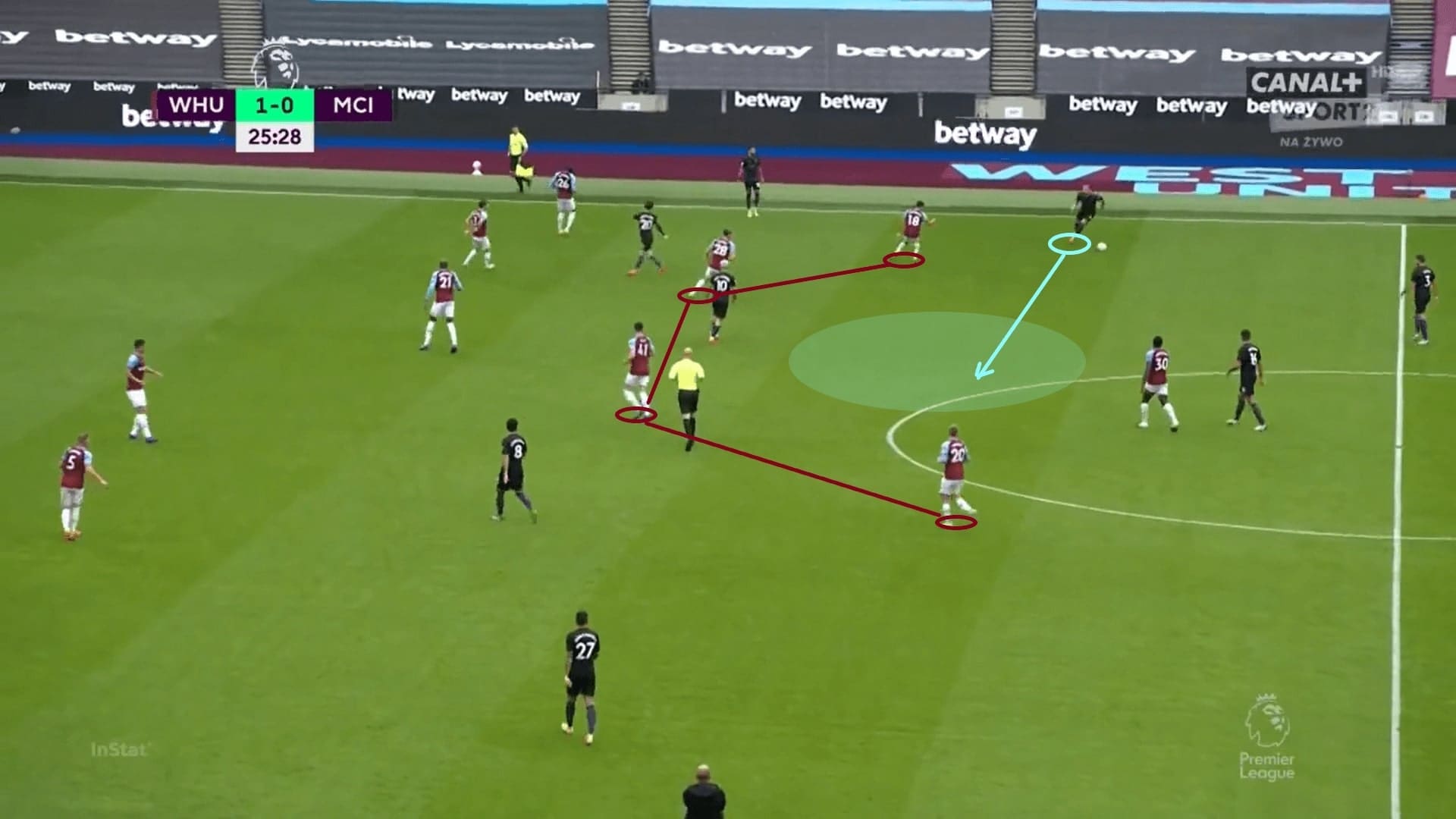
Therefore, we skipped García in this scout report and focused instead on some events involving Kyle Walker. The right-back had the physical superiority to outrun an opponent, but it was definitely unwise to bring the ball into a group of defenders.
The first image shows that spaces were available in the centre when Walker was on the ball. He recognized this space and looked to move into it, due to West Ham shutting down options out wide.
It was fine to go inside, but if he ran with the ball, everyone followed and suddenly he found himself surrounded by the group of West Ham players. Now, Walker is not short of options as Raheem Sterling and João Cancelo overloaded the wing-back in a 2v1, and finding one of them would progress the attack into an advanced area.
However, given Walker was carrying the ball, it was more difficult to adjust an optimal passing angle to the progressive options. And because of opposition surrounding, he did not have much to think, merely returning the ball to García – no progression. If the ball was moved by passes, it would be much more difficult for the opposition to defend as they can never reach the ball speed. City did the opposite too much and it killed some potential offensive developments earlier this season.
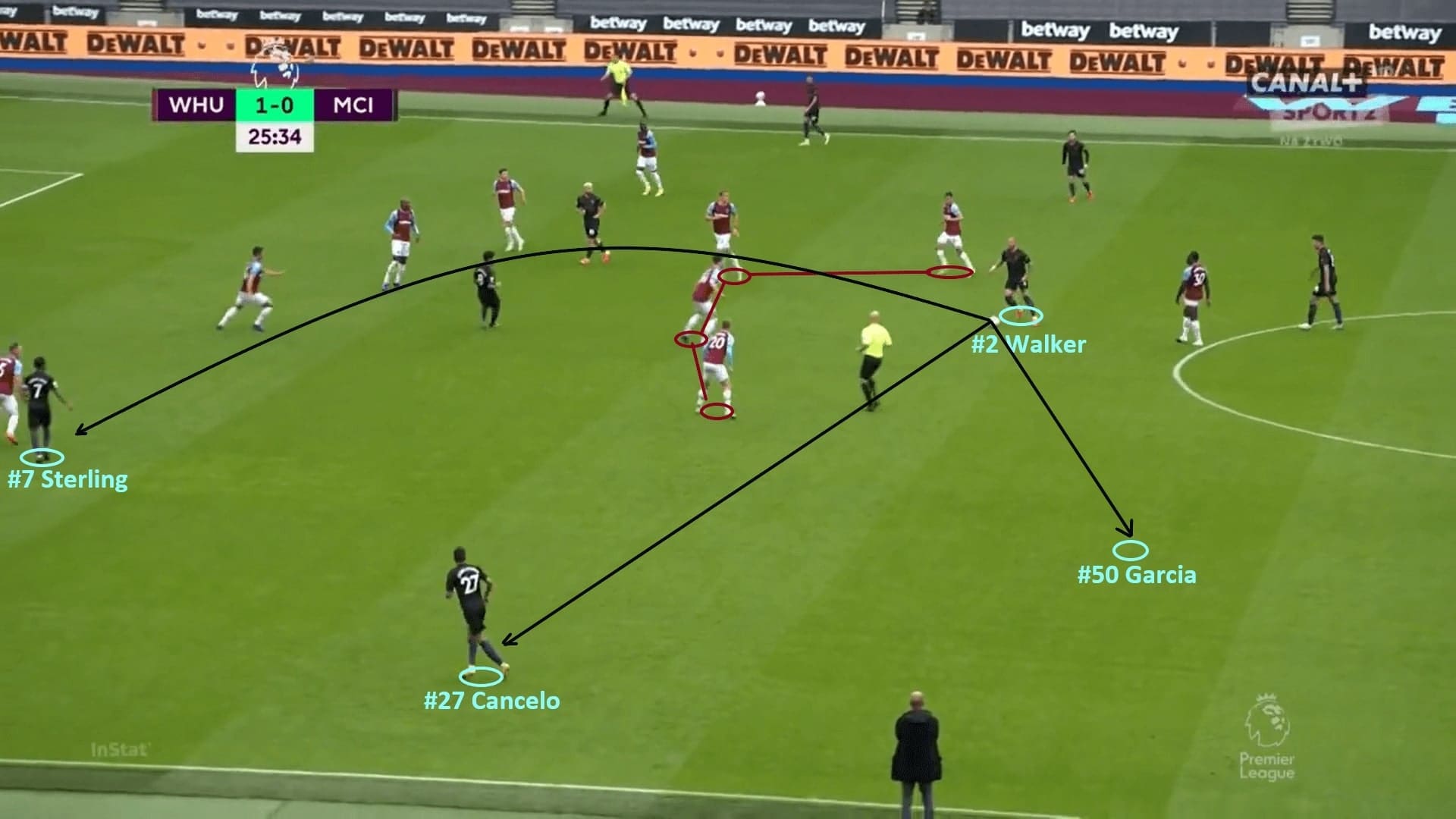
Another issue of City to develop the attack from the second to the third phase was lacking layers. When the ball was near to the touchline, players very quickly ran forward and stopped behind the opposition midfield. While they remained statics, it was very easy for the opposition to defend as the team shape was flattened – no triangles created, that means the ball was short of passing options.
Here, Walker could not do anything to hit into the more dangerous zones as that five players of City stood as a horizontal line. Only a return pass was viable, or else he had to take the risk of possession turnover from an early cross. In that case, the defensive transition of City would also be in trouble given this flattened shape would not facilitate counter-pressing – players have spread apart too far away.
Even by cases, some front players would search for the attacking depth, but that behaviour was not difficult to track given without creating decisional dilemma on the defenders.
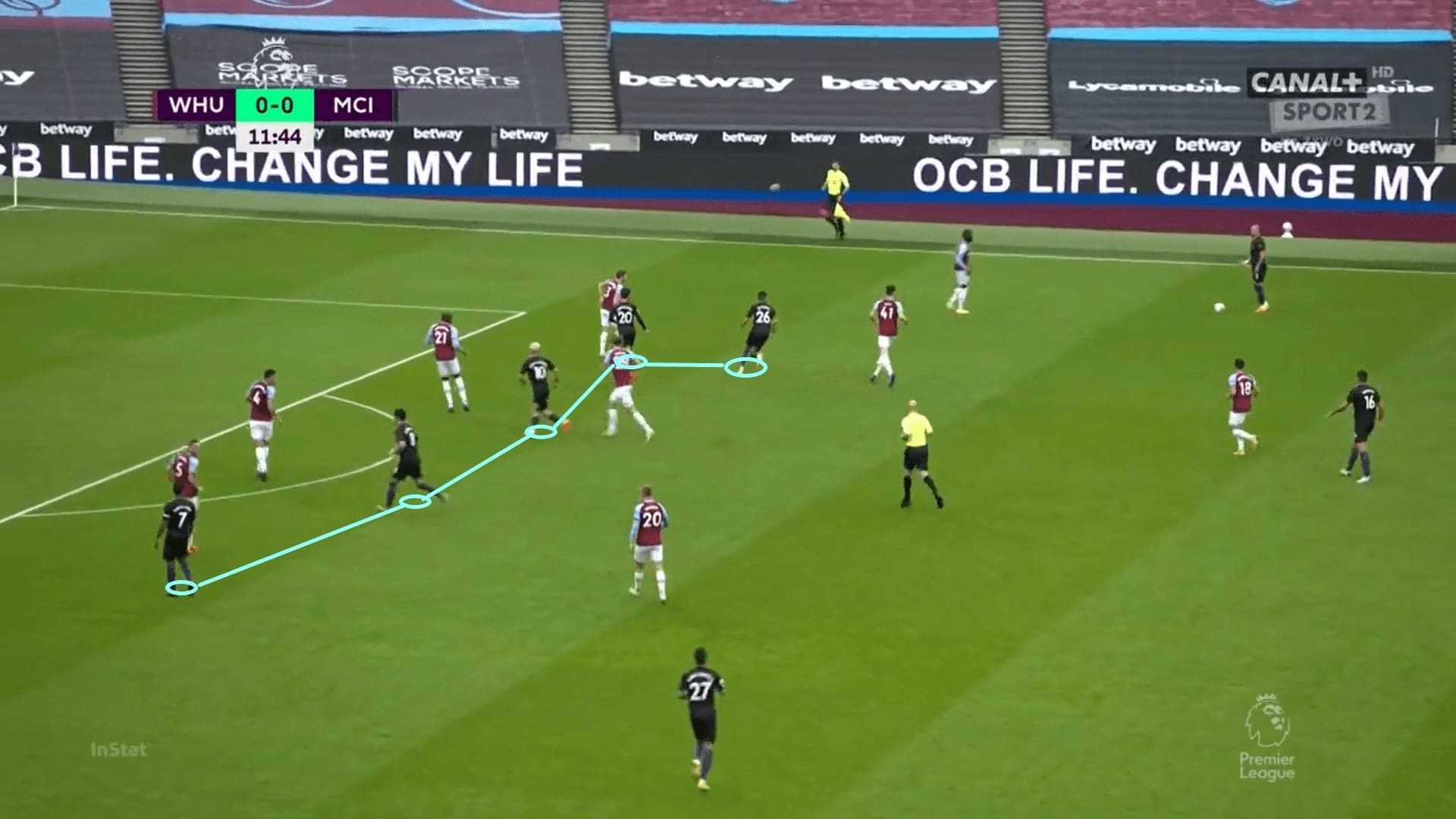
As Pep has said, players without the ball have to run a lot, so none of the above players should remain statically and wait for the ball. By looking at how City did far better in recent games, you could feel the development of the team.
In the image below, Oleksandr Zinchenko had the ball, three progressive options ahead but they all stayed on the same horizontal zone, which was a similar situation to the previous one.
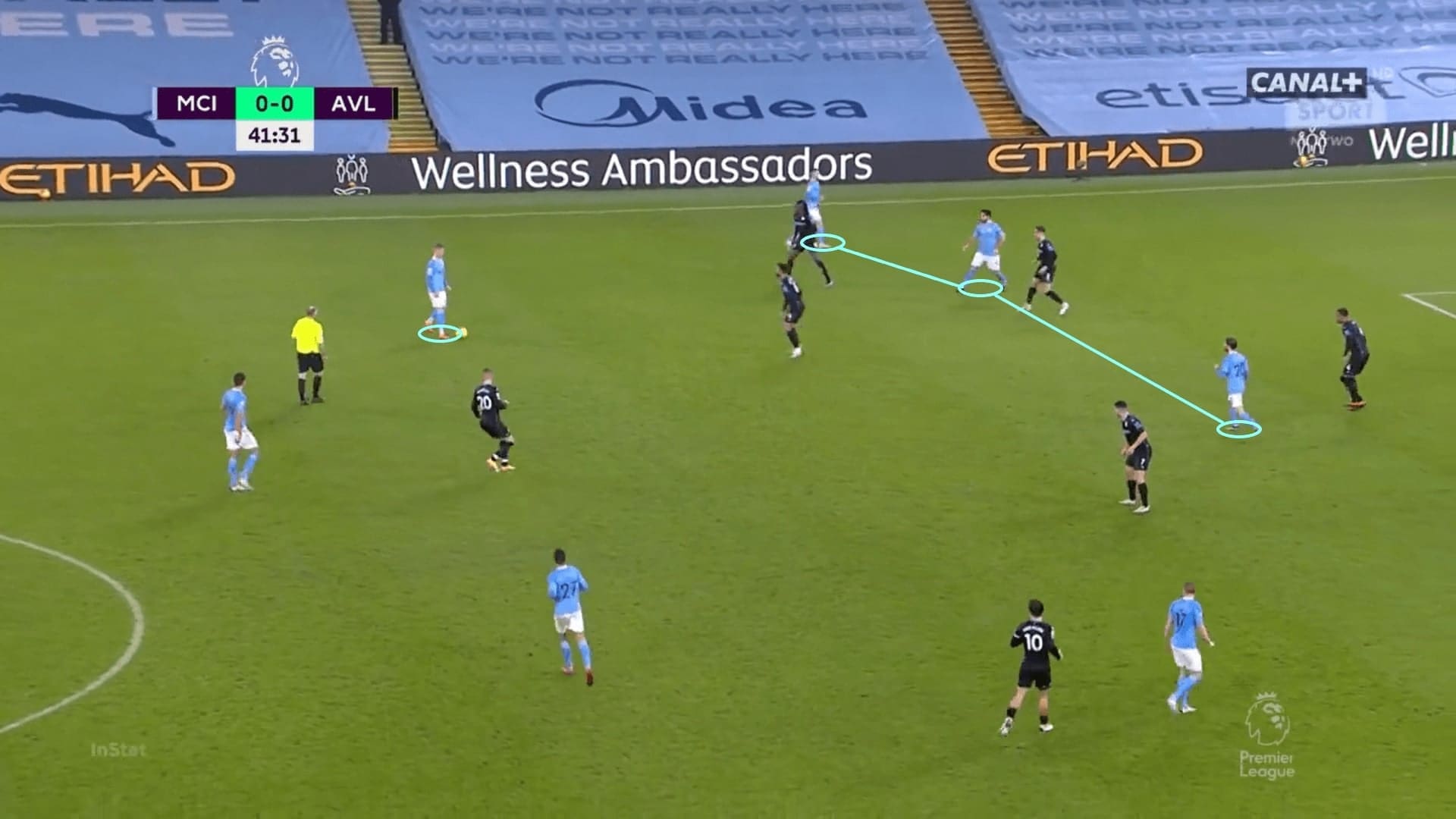
But what City players should be praised was their willingness to make efforts off-the-ball. To create passing options and the dynamics, the three players initially on the same line all moved to help Zinchenko, and now the attack was hugely unpredictable.
With Bernardo Silva moving towards the half-spaces, İlkay Gündoğan slightly dropping and Phil Foden going forward, now that line was not flat anymore, but two layers ahead was created. The most important was their shortened distances with Zinchenko has offered more options for the ball, you could see how the defence was forced to adjust, defenders slightly off-balance, and the attack could be developed further.
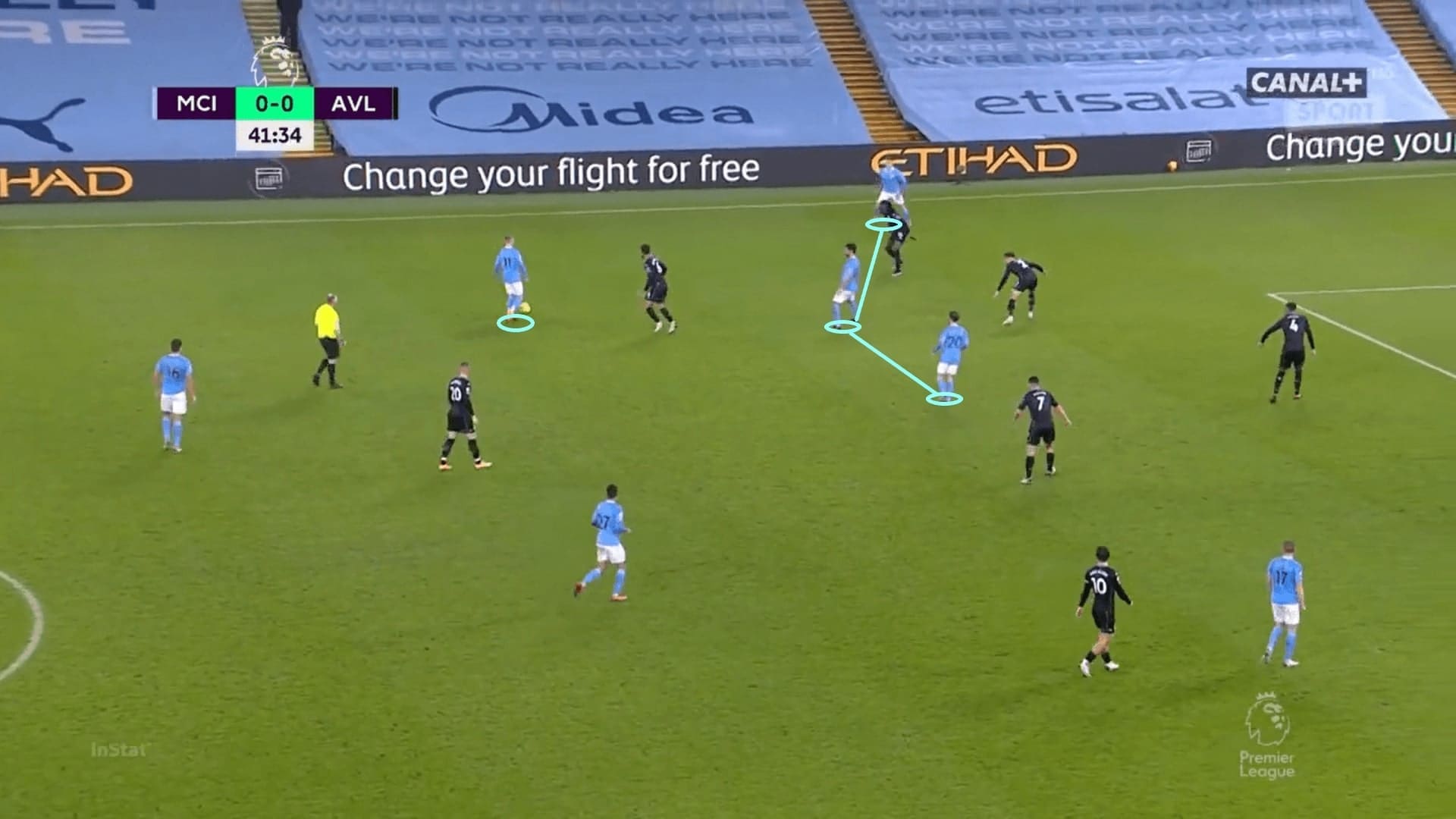
City never lacked flair players, but to Pep and the stream of positional plays believers, dribbling means to dribble at the right moment, instead of the action itself. Since Pep did not want the players to run with the ball before reaching dangerous zones, another solution – passing becomes the key to disorganize the defence.
Therefore, now City emphasized a lot on creating passing options. Apart from the above examples, you could see this situation when Foden got the ball out wide. Silva and Gündoğan instantly speed up and went to two directions – underlapping and overlapping to create two options. With the efforts of players without the ball, the attack should not be dead and City could play in their own rhythm, creating more chances.
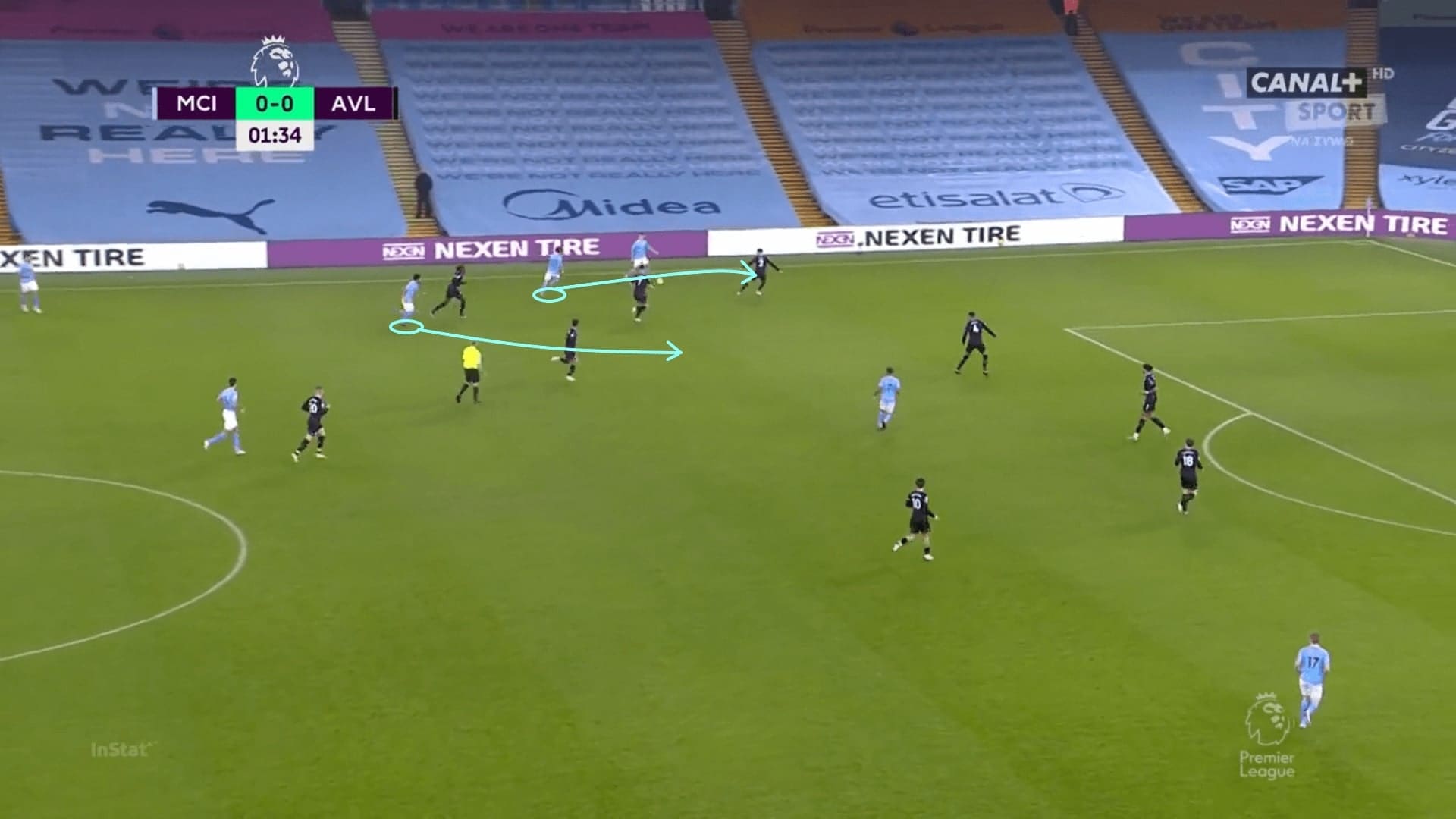
Gündoğan’s adaptability to play higher
The next two changes we would like to show was the different roles of two players in the team – Cancelo and Gündoğan, who gradually became a pivotal part of the team. This section focuses on the change of Gündoğan’s role, on how did he moved from a deeper role to an advanced one.
The first image suggests the old job of Gündoğan – playing together with Rodrigo Hernández at the midfield as a double-pivote. His duties including interpreting the situations and offer the best solution during the build-up phase. Meanwhile, another vital job was playing as the offensive markers, which means he should always stay alert to perfect his first behaviour during the defensive transitions. Therefore, he was deeper at the midfield to serve for defensive purposes.
The role of Gündoğan (to kill the transitions) was the priority of Pep since the last year, this was his solution to the vulnerability of the defence. Last year, the centre-backs made too many mistakes and were never good enough in isolated situations, Pep did not want this to happen, so when designing offensive tactics, he planned players to do the offensive markings strictly.
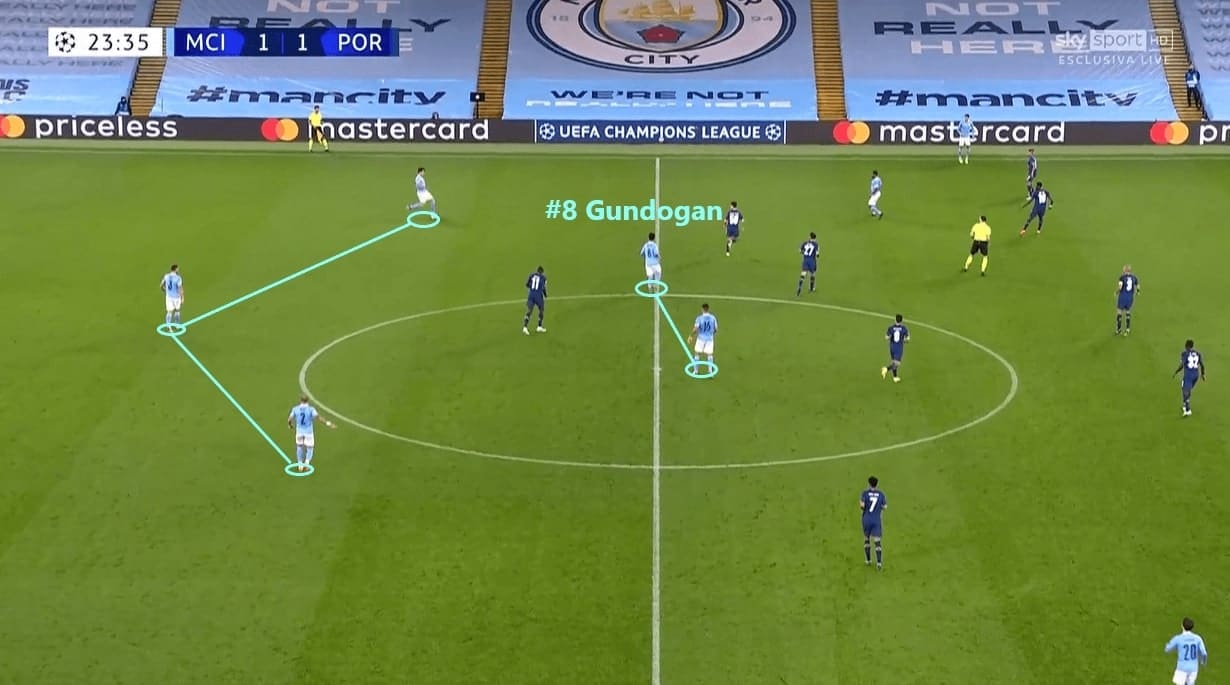
As mentioned, the arrival of Dias and resurgence of Stones have helped the team defensively – especially that they were not prone to making individual errors. This gave Pep a lot of confidence to commit more offensively without worrying too much in the defensive transitions.
This is the difference, with Dias to communicate at the backline, even City have to deal with numerical deficit situations, it was less likely to concede an opportunity compared to last season. The Portuguese defender always makes good decisions, including delaying instead of committing himself to tackle. The image below shows Villa had a 3v2, but this eventually did not turn into a shot. The improvement of this part has allowed Pep to put Gündoğan into a more advanced role.
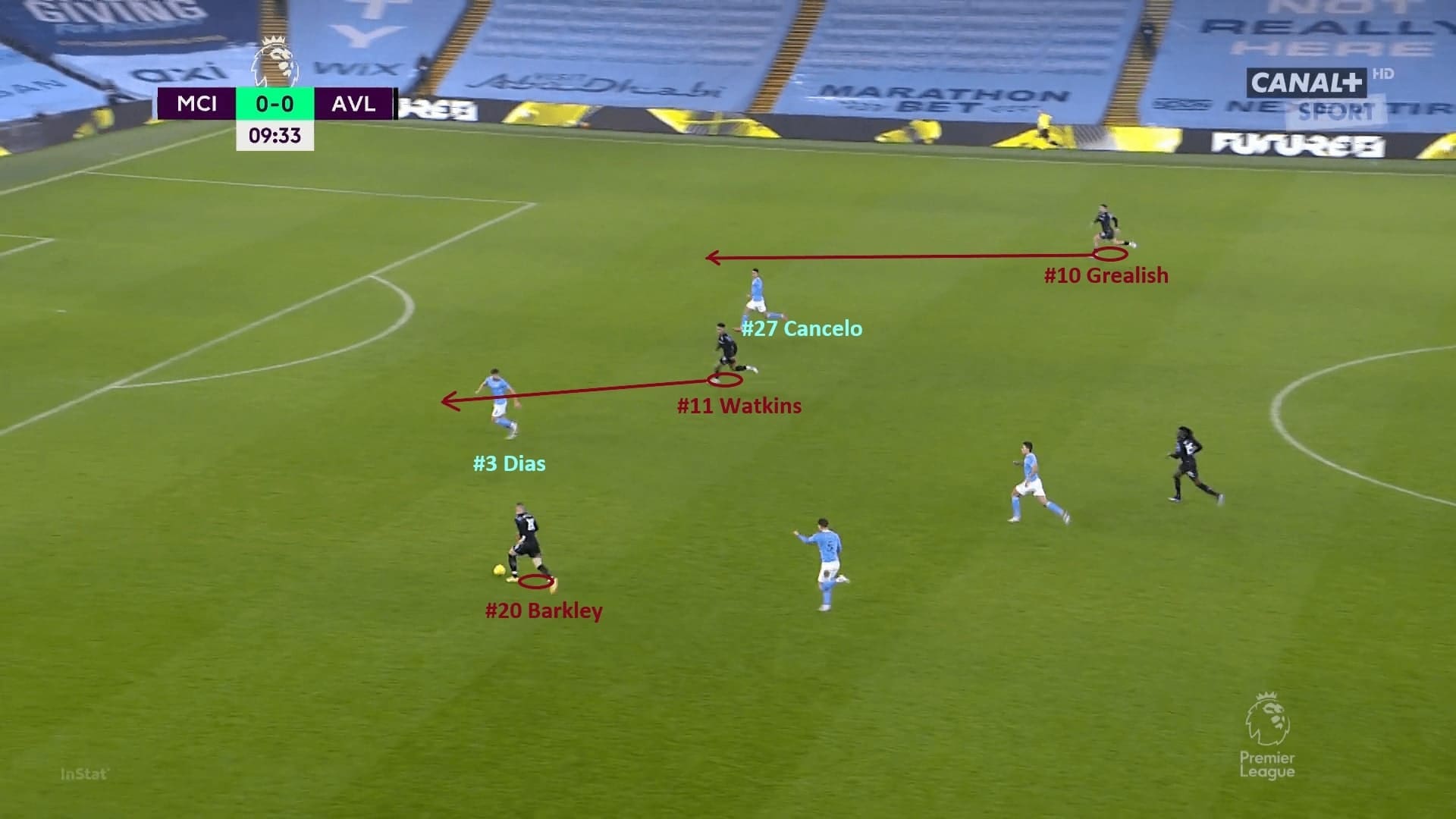
Because of Gündoğan playing higher, his presence positively impacted the team’s ability to overload the horizontal zone at the second line. This was vital to the team to play the ball behind the opposition midfield by creating decisional dilemmas.
For example, when United had two at the midfield, City had three to four. And since Scott McTominay was in a 1v2 situation, when he oriented himself towards Kevin De Bruyne, the other player – Gündoğan was free to receive the ball.
This manipulation of second line was one of the best parts that City have done well recently, and if they continued, hardly could the oppositions defend.
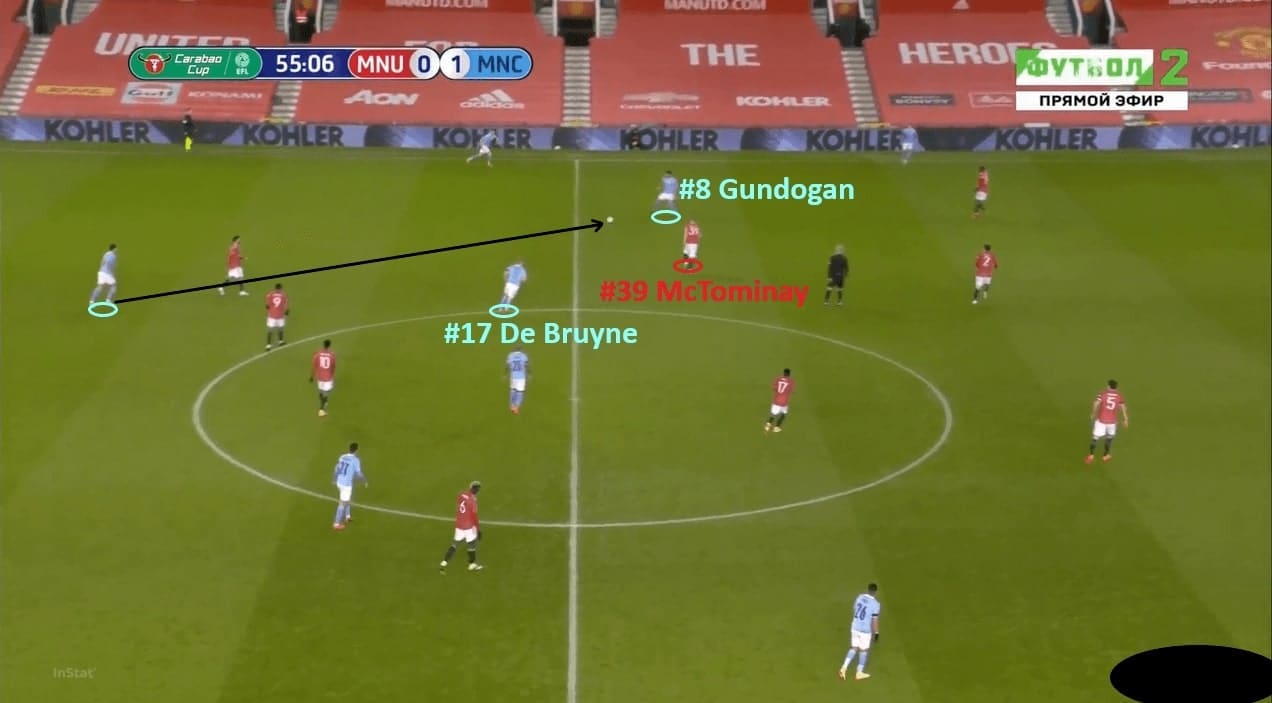
Gündoğan was a very smart player, as Guardiola has always said, it was never easy for a defensive midfielder to switch to an advanced role. However, the German international adopted quite well and provided the tactical functions required by the manager.
For example, Gündoğan timed his run into half-spaces very well, as shown in the below situation. When Foden was attacking from the flank, Gündoğan would made the forward run that creates the dynamics. Now, Foden had more than one option, including releasing Gündoğan for a cut-back, cutting inside (an option available since the run took Douglas Luiz, the number 6 of Villa away), or passing back to an option outside of the penalty box.
Even though Gündoğan was not receiving the ball, his move helped Foden to execute the second option. If he did not move and remained static at the edge of the box, such an action was not possible as everyone was covering the area. Therefore, remember, running off-the-ball are a huge element of Pep’s philosophy.
By playing closer to the penalty box, Gündoğan also scored some vital goals that helped the team to win. In the last campaign which he played 50 games to score 5. But in the recent 7 Premier League games, he got the same tally already.
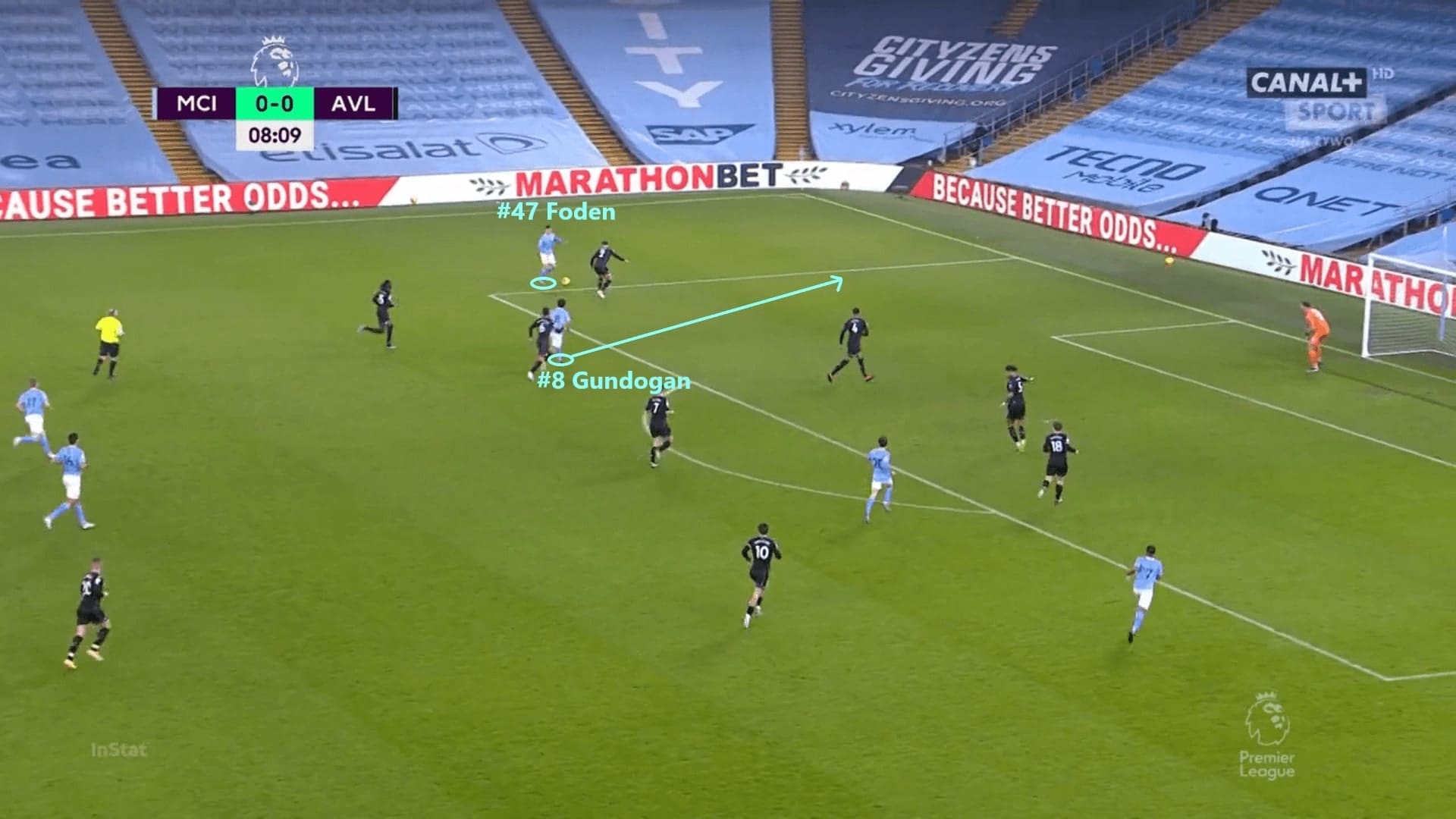
Cancelo’s flexibility to serve multiple roles
Another change was down to Cancelo, who only joined the team in 2019. In the previous campaign, he was yet to fully understand the concepts of Pep, hence, not always starting. But now he improved a lot, and being able to use his strengths to help the team.
Similar to Gündoğan, even being deployed in the left-back position, Cancelo spent his time to do the offensive markings during the attack at times, staying deeper at the second layer. This limited the maximum potential of his offensive ability. And for example, when City prepared to control Jarrod Bowen of West Ham in the first half, Cancelo was tasked to stay deeper with the winger, and Sterling stayed in the wide left position. Of course, things have changed as explained, the offensive marking is no longer the primary concern.
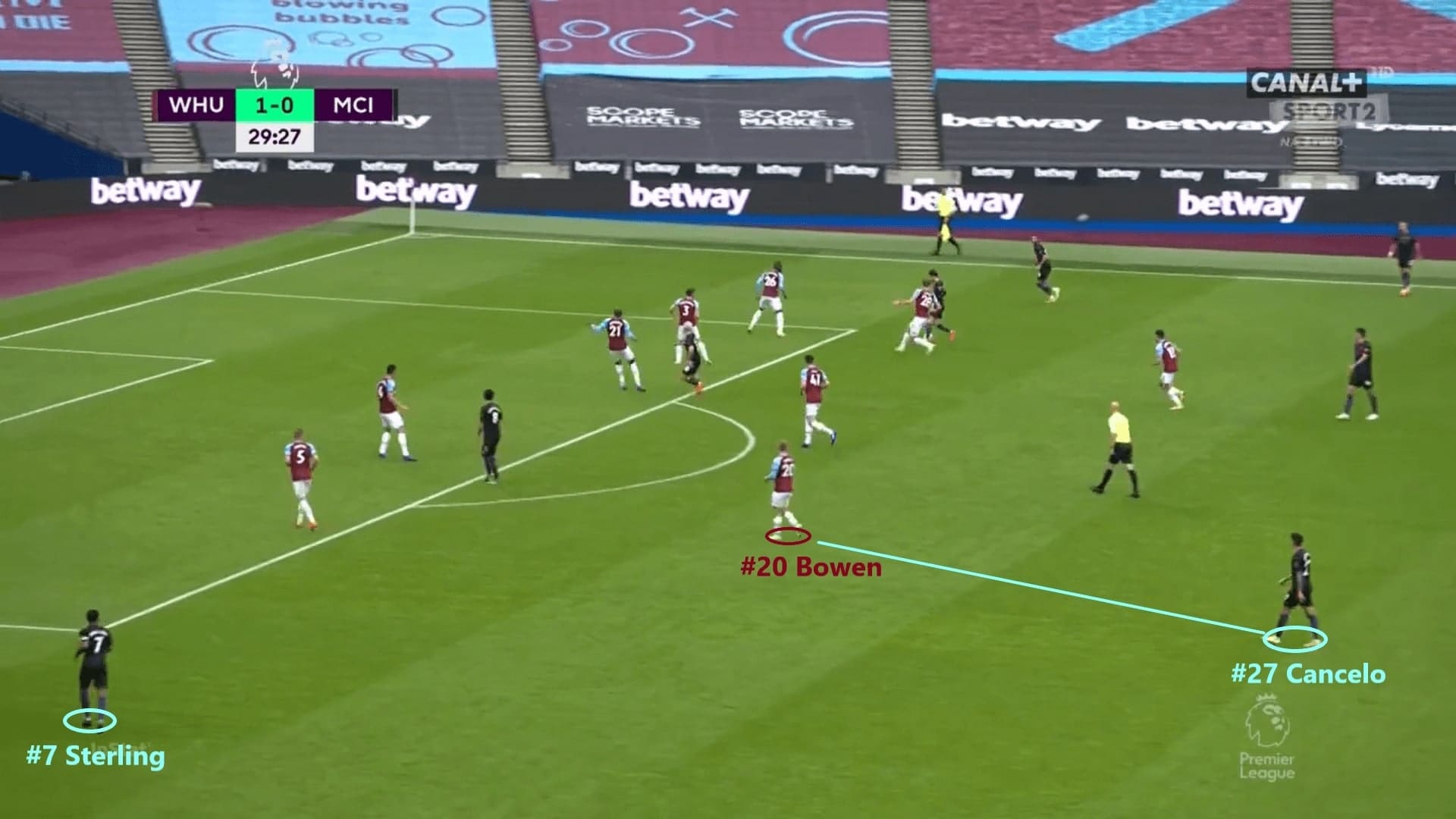
The best example of Cancelo’s multiple functions was in the game against Newcastle – the Portuguese international played a very different role in the second half than the first one. In the first half, he played a more hybrid role between a midfielder and a full-back. Not only did he tucked inward, but he might also go into the opposite vertical half as a partner of Rodri (check the events below). This form of double-pivot with Rodri also had a chain effect that pushes Gündoğan further forward.
In the second half, he returned as a more traditional full-back, playing wider and nearer to the touchline. You can notice the differences in activities of Cancelo in zone 18 below, which he barely did anything in the first half. However, in the second 45, he had an enormous impact on the right.
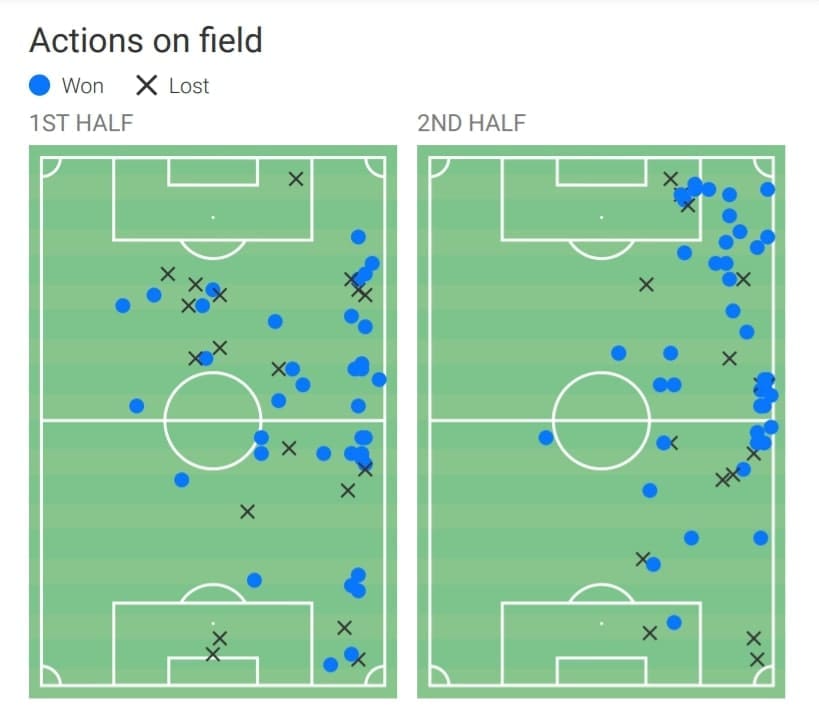
Now, not only did Cancelo has developed the underlapping runs that helped the team. When he was at the midfield, he also had a strong diagonality to reach the player searching for offensive depth. This has already contributed to some City goals already.
Below shows the goal against Newcastle, which was scored by Gündoğan. Cancelo receiving the ball at the centre of the pitch, an action that creating a decisional dilemma for the defenders. As the extra man at the midfield, that area was overloaded and when he was closer to the backline, the defenders are confused about whether stepping up or not.
In this goal, it took a few seconds for the Magpies to jump out, the timing was completely wrong and this pass allowed Sterling to receive behind the back five, then the cross and a goal.
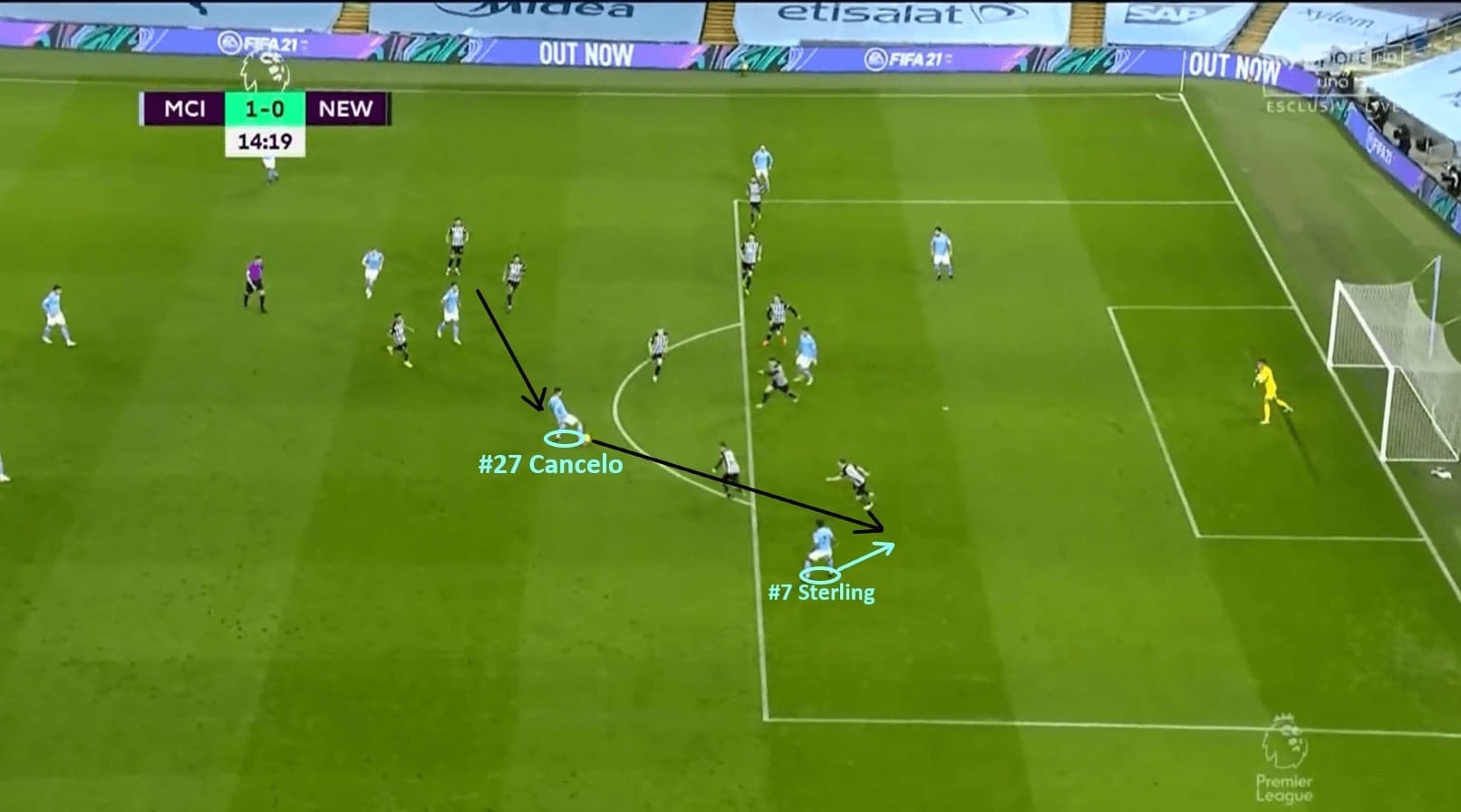
The same pattern occurs again just weeks after in a FA Cup game against Birmingham City. Again, Cancelo receives at the centre again, and no one could press him instantly given the positioning as explained.
And when he played the through ball diagonally into spaces behind the defence, the backline was forced to go deeper to cover spaces in the penalty box. If the midfielders did not follow well enough to cover spaces pre-occupied by the defence, City could shoot by picking the second balls, and it was how Silva scored the opener.
Cancelo apparently enjoying his new role at Manchester!
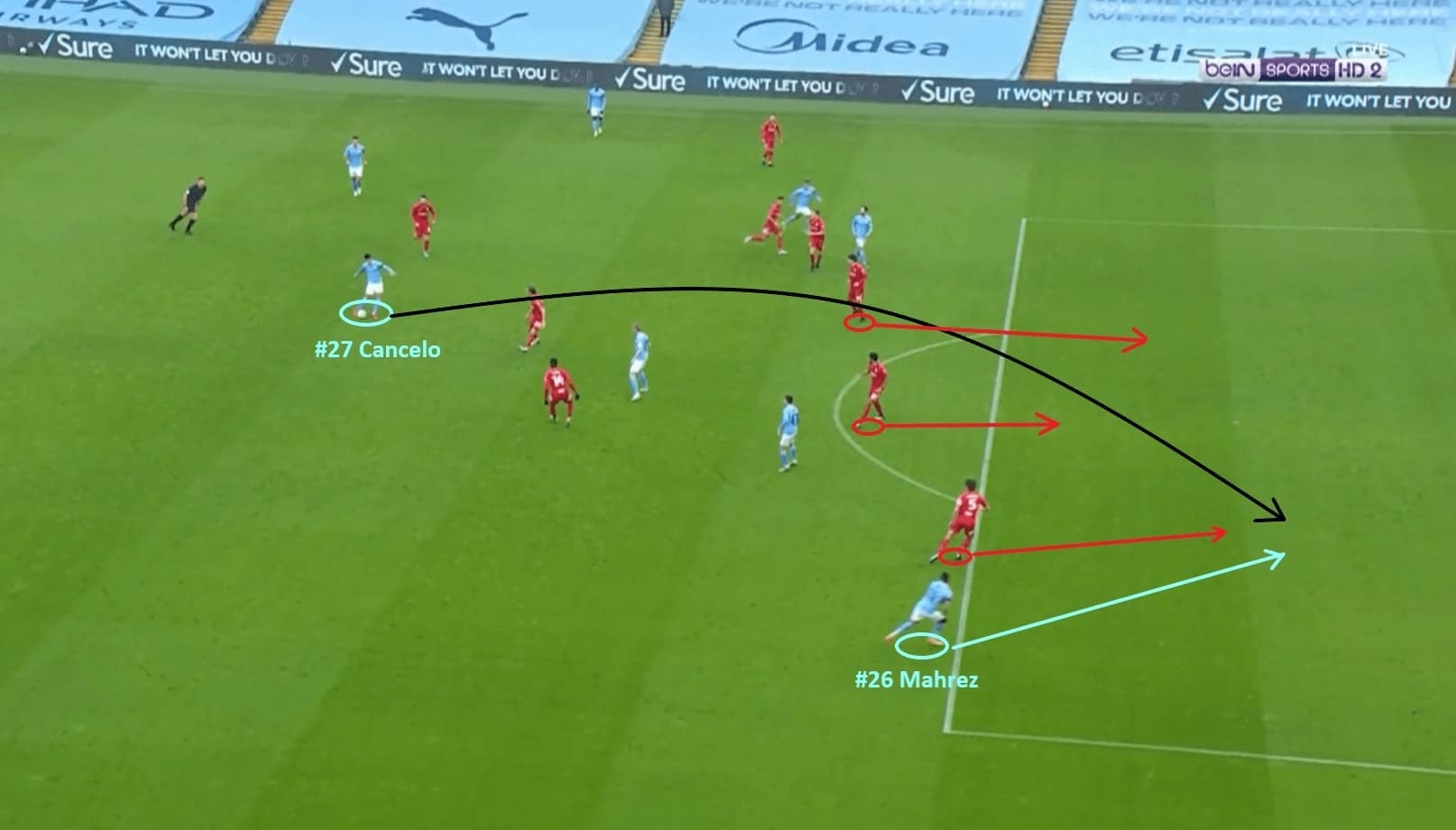
Final remarks
And now they are back to the title race, thanks to the tactical switches of Pep. Apart from the above factors, another huge impact was Stones’ resurgence, the English centre-back is now a reliable part of the defence, rarely make mistakes. We have explained his improvements in this analysis already.
No one knows how this season would end, but City should not be miles away from the champion liked last season, and with these tactics, can they challenge the UEFA Champions League?





Comments